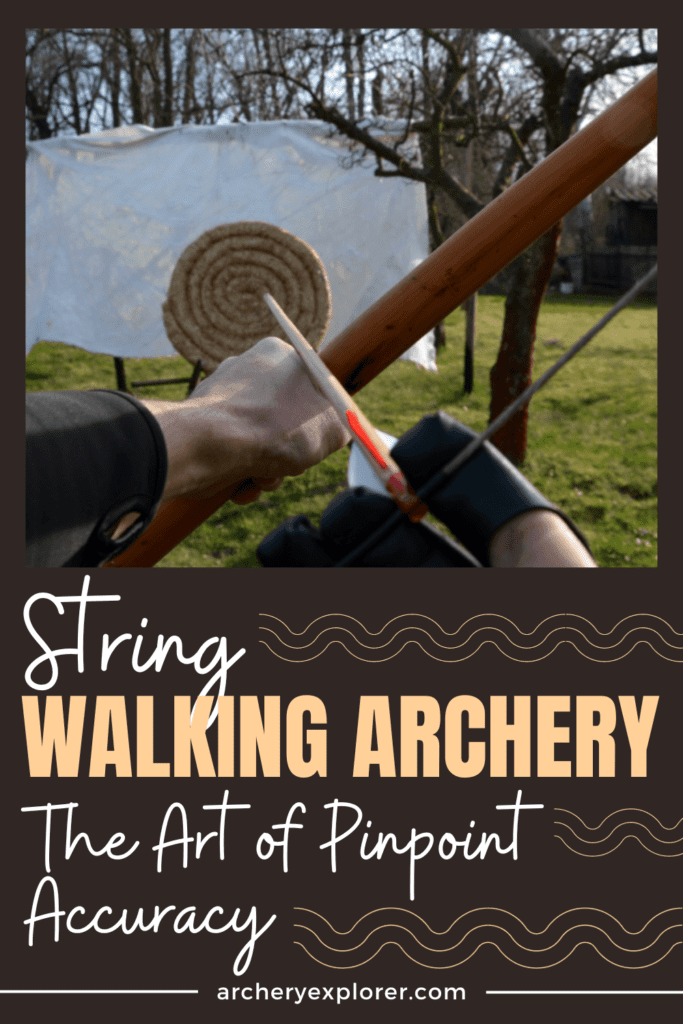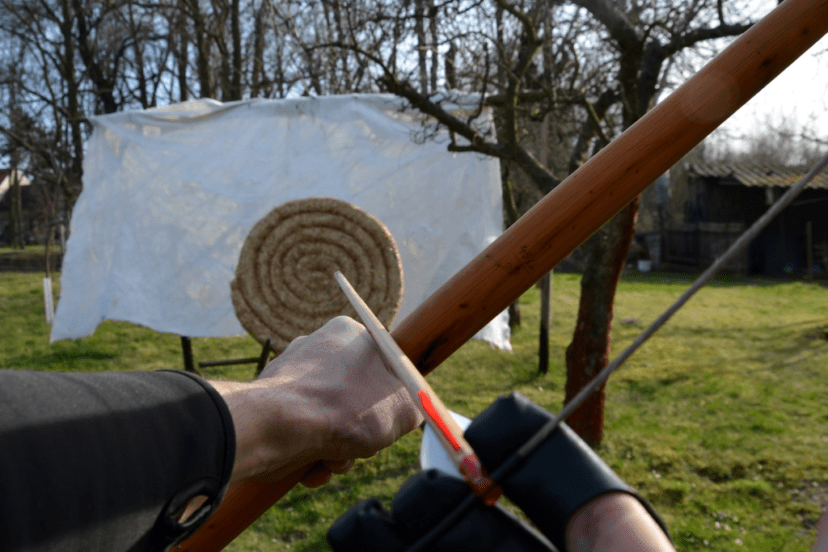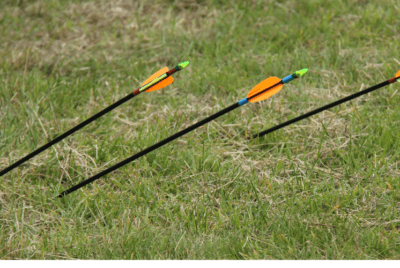String Walking Archery: The Art of Pinpoint Accuracy
Greetings, fellow archery enthusiasts and aspiring string walkers! Today, I’m thrilled to take you on an exciting journey through the captivating world of string walking archery. Prepare to discover the art of precision, as we delve into the techniques, gear, and mindset required to excel in this remarkable shooting method.
Introduction to String Walking Archery
String walking is a fascinating archery technique that offers unparalleled accuracy across varying distances. By subtly adjusting your hand position on the bowstring, you can create a “gap” or “crawl” between your arrow and point of aim. This skill is invaluable for both target shooting and hunting, making it a must-learn technique for any serious archer seeking to enhance their accuracy.
Understanding String Walking Technique
What is String Walking?
At its core, string walking involves moving your fingers up or down the bowstring to achieve precise shooting at different distances. By eliminating the need for multiple aiming points, this technique allows archers to simplify their shot process and achieve consistent results across various yardages.
Advantages of String Walking
The advantages of string walking are manifold. It empowers archers with exceptional versatility, enabling them to hit targets at different ranges with remarkable accuracy. Additionally, string walking fosters a deeper understanding of shot placement, elevating one’s archery prowess to new heights.
Considerations Before Using String Walking
Before diving into string walking, there are essential considerations to ponder. Reflect on your archery goals, shooting style, and the type of bow you use. String walking is particularly well-suited for recurve bows, though it can be adapted for compound bows with the right adjustments. Additionally, ensure your bow is optimally tuned for the best performance.
Choosing the Right Bow for String Walking
Recurve Bow vs. Compound Bow
Both recurve bows and compound bows can be utilized for string walking, each offering distinct advantages. Recurve bows, with their traditional appeal, provide simplicity and a direct connection to archery’s roots. On the other hand, compound bows offer mechanical benefits like let-off, making it easier to hold the draw at full draw and potentially enhancing shooting stability.
Finding the Proper Draw Weight
Selecting the appropriate draw weight is paramount. Beginners should start with a manageable draw weight that allows for consistent and controlled shooting. As strength and proficiency increase, gradually progress to higher draw weights for improved accuracy.
Setting Up Your Bow for String Walking
A properly set-up bow is the foundation for successful string walking. Pay meticulous attention to your bow’s limbs, string, and accessories to ensure they are in pristine condition. Additionally, mastering the art of arrow nocking and utilizing a reliable release aid contribute to consistent and accurate shots.
Mastering Your Shooting Stance
The Correct Hand Placement
Achieving the perfect hand placement on the bow grip is fundamental for stable and accurate shooting. Experiment with different grip styles to find the one that offers the best combination of comfort and control.
Nocking the Arrow
Consistent arrow nocking is crucial for precise shooting. Ensure the arrow is nocked correctly and aligns precisely with your intended point of impact.
Understanding Anchor Points
Establishing a consistent anchor point is vital for shot consistency. Experiment with different anchor points, finding the one that feels natural and allows for repeatable shots.
Step-by-Step Guide to String Walking
Establishing the Gap
The gap between the arrow and the point of aim varies based on the distance to the target. Begin by practicing at known distances to determine the gaps needed for different yardages.
The 10-Yard Walk
Embark on your string walking journey at close distances. Starting with the 10-yard walk allows you to become familiar with the technique and build confidence in your shooting abilities.
The 20-Yard Walk
As you progress, advance to the 20-yard distance. This step challenges your precision and refines your string walking skills.
The 30-Yard Walk
Mastering the 30-yard walk marks a significant milestone in your string walking journey. Hitting targets accurately at this distance demonstrates your growing proficiency and shooting prowess.
Fine-Tuning Your String Walking Technique
Achieving Consistency
Consistency is the holy grail of archery, and string walking is no exception. To achieve this, focus on executing smooth and controlled movements when adjusting your hand position on the bowstring. Practice diligently to ingrain muscle memory and build a consistent shooting form.
Adjusting for Various Distances
String walking empowers you to shoot accurately at various distances without the need for multiple aiming points. As you progress, refine your gap adjustments for different yardages to ensure precise shot placement across the range.
Dealing with Wind and Environmental Factors
Environmental conditions can influence your shots, particularly when shooting outdoors. Wind, lighting, and temperature changes can impact arrow flight. Learn to adapt your shooting technique and aim accordingly to overcome these challenges.
Common Mistakes to Avoid
Gripping the Bow Too Tightly
A common mistake among archers, gripping the bow too tightly can lead to tension and inconsistent shots. Focus on maintaining a relaxed and comfortable grip, allowing the bow to settle naturally in your hand.
Overlooking Proper Form
Proper archery form is the backbone of consistent shooting. Don’t let the excitement of string walking divert your attention from maintaining good posture, shoulder alignment, and anchor points.
Rushing Your Shots
String walking requires a steady and patient approach. Avoid rushing your shots; instead, take a moment to focus, breathe, and execute your shot deliberately and smoothly.
Advancing Your Skills through Practice
Regular Training Routine
To progress in string walking archery, commit to a structured training routine. Dedicate regular practice sessions to refine your technique and develop the muscle memory required for consistent shooting.
Incorporating Different Targets
Expand your shooting experience by engaging with various targets. Practicing on targets of different sizes and at different distances will challenge your accuracy and adaptability.
Joining Archery Clubs and Competitions
Joining archery clubs and participating in competitions is a fantastic way to refine your skills and learn from seasoned archers. The camaraderie of like-minded enthusiasts will motivate you to improve continually.

The Mental Aspect of String Walking
Building Focus and Concentration
String walking archery not only engages your physical skills but also tests your mental fortitude. Building and maintaining focus is vital for consistent accuracy. Train your mind to stay present in the moment, shutting out distractions and doubts. Techniques like mindfulness meditation can help you remain centered while preparing for shots.
Managing Competition Nerves
Whether you’re at a local tournament or competing on a larger stage, managing competition nerves is crucial. String walking amplifies the need for mental composure. Develop pre-shot routines that calm your nerves, ensuring a steady and precise shot execution. Remember, nerves are a sign that you care deeply about your performance, so embrace them and channel that energy into focused concentration.
Visualization Techniques
Visualization is a potent tool in an archer’s arsenal, especially in string walking. Picture yourself executing each step flawlessly—the draw, the anchor, the release—visualize the arrow finding its mark with pinpoint accuracy. This mental rehearsal primes your muscles and mind for success, boosting your confidence and reinforcing a positive outcome.
Taking Care of Your Bow and Arrows
Maintaining Your Bow
Your bow is your ally in string walking archery, and its care is paramount. Regular maintenance ensures optimal performance. Inspect limbs, strings, and any accessories for wear or damage. Keep the bow clean and protected from moisture and extreme temperatures to prolong its life and preserve its accuracy.
Arrow Maintenance and Inspection
Arrows are the carriers of your success. Regularly examine them for cracks, bends, or other signs of damage. Ensure the fletching is intact and secure. A well-maintained set of arrows ensures consistent flight and accuracy, allowing you to focus on refining your string walking technique without worrying about equipment inconsistencies.
Safety Tips for String Walking Archers
Safety Gear and Equipment
Prioritize your safety during every session. Essential safety gear, including armguards and finger tabs, shields you from potential injuries caused by the bowstring’s release. Invest in quality protective equipment to ensure a safe and enjoyable string walking experience.
Shooting Range Etiquette
When sharing a shooting range with other archers, uphold proper shooting range etiquette. Follow range rules, communicate effectively, and maintain respect for fellow shooters’ space and concentration.
Being Aware of Your Surroundings
Archery should always be conducted in a safe environment. Always be mindful of your surroundings, including other archers and bystanders, to prevent accidents.
Benefits Beyond the Target
Physical Fitness and Coordination
Engaging in string walking archery offers a holistic fitness experience. Drawing the bow engages core muscles and enhances balance, while the repetition of shooting fosters improved hand-eye coordination over time.
Mental Health and Stress Relief
The rhythmic routine of archery, combined with the mental focus required for string walking, offers an effective way to manage stress and enhance mental well-being. The tranquillity of the shooting process acts as a form of meditation, promoting relaxation and reducing anxiety
Conclusion
Congratulations on embarking on this exhilarating journey into the realm of string walking archery! By mastering this technique, you’ve unlocked a world of precision and shooting prowess. Remember to remain dedicated to practice, embrace the challenges, and relish the rewards of hitting bullseyes with unwavering accuracy.
FAQs
Q1: Can I use string walking for hunting as well?
A1: Absolutely! String walking is a versatile technique applicable to hunting scenarios, providing adaptability for shooting at varying distances in the field.
Q2: What kind of arrows are best for string walking?
A2: For string walking, choose arrows that match your bow’s draw weight and your shooting style. Carbon arrows are a popular choice due to their durability and consistent performance.
Q3: Is string walking suitable for beginners?
A3: While string walking may pose initial challenges, it’s a valuable skill worth learning once you’ve mastered the basics of archery and developed a solid shooting foundation.
Q4: How long does it take to become proficient in string walking?
A4: The time required to become proficient in string walking varies among individuals. With consistent practice and dedication, significant improvements can be achieved within a few months.
Q5: Can I switch back to traditional aiming methods after learning string walking?
A5: Absolutely! String walking enhances your overall archery skills and understanding, making it a valuable addition to your archery repertoire. You can seamlessly switch between different aiming techniques based on your shooting preferences and shooting situation.





